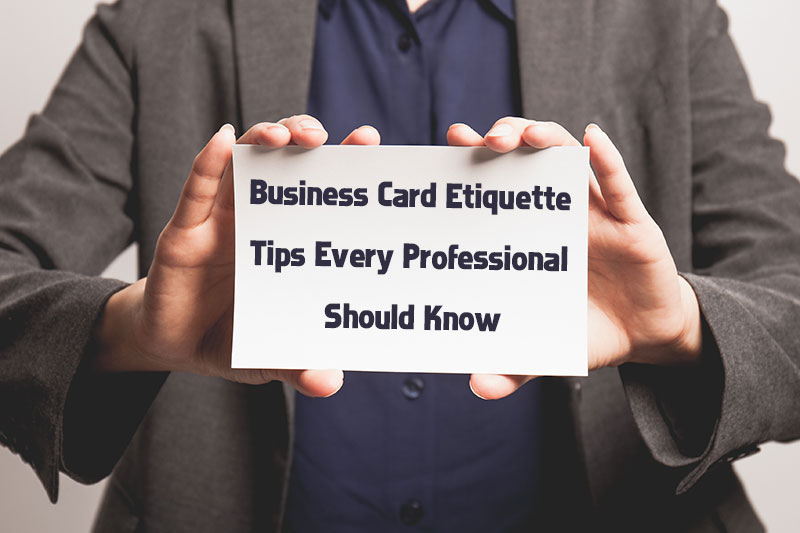Are business cards are still relevant in this digital world? Yes, they are. A neat, compact card with your name, company logo, and contact information is still the most professional way to advertise your business. It is a tool that will allow people to contact you for business. You will likely receive as many cards as you hand out and a business transcription company can help you categorize and digitally organize your business card contact information. Business card etiquette is about treating this important networking tool with the importance and respect that it deserves. Here are seven rules that every professional should know when giving and receiving business cards:
- Make Sure Your Business Card Has All The Relevant Details: Your card should have all your contact information and include all the ways people can contact you. As it is also a representation of your brand, your card should be attractively designed and unique. Print new cards if your contact information changes.
- Include The Right Information: Make sure your card has key details like your logo and tagline, full name and job title, current contact information including your official email address, your web address, your specific skills (if possible), and your professional social media accounts. Leave sufficient empty space on the card to avoid clutter.
- Always Carry Your Business Card: Be prepared. Never go out without your business card and always carry as many as you can. It’s extremely unprofessional to say that you don’t have your card or that you don’t have any more left with you.
- Use A Business Card Case: No matter how well your card is designed, a crumpled or soiled card will create a poor impression. Nothing can be more embarrassing than giving a prospective client a soiled card. So protect your business cards by carrying them in a case and put the case in a place where you can find easily.
- Be Selective When Handing Out Your Business Card: Don’t give your card to every person you meet. It’s not about how many cards you handed out at an event, but about who you gave it to. Build rapport and trust at a networking event, but be selective and exchange cards only with people who matter professionally.
- Give Your Card When Asked For It: Don’t force your business card on anyone. If someone asks for your contact information, that’s the right time to hand over your card. Remember to reciprocate and ask for that person’s business card.
- Give And Receive Business Cards The Right Way: Use your right hand when giving and receiving a business card, and if the other person uses both hands, do the same. Hold the card by the top corners and make sure the recipient can see the information. Business card etiquette differs around the world, so make sure you know the rules if you are doing business internationally. For example, in Japan, it’s polite to read the card over and make sure you understand the information, especially the person’s name and how to pronounce it.
- Be Professional When Handling Your Business Card: If you want to write a note on your business card, ask the person before doing so. When you receive a card, you can jot down a reminder on it, but it would be better to avoid this at the time of the exchange. Best practice in this case is to observe how the other person is handling your business card and doing the same.
Why Business Card Transcription Is Important
Collecting business cards, knowing how to give and receive one, and having your own card handy an important aspect of networking and a sign of professionalism. However, as your business card collection grows, it can become difficult to manage. A business card transcription service provider can help you solve this problem by digitizing all your valuable business card information. Once digitized, all this contact information can be transferred into your Customer Relationship Management (CRM) system.
Business cards are scanned using OCR or human transcription or a combination of both. In fact, digital transcription works the best for business cards that are hard to read and include handwritten information. Moreover, human transcription can ensure greater accuracy than OCR. Transcribed business cards can be imported into your CRM, email marketing applications, and more, allowing you to manage your contacts efficiently and stay linked to them.




